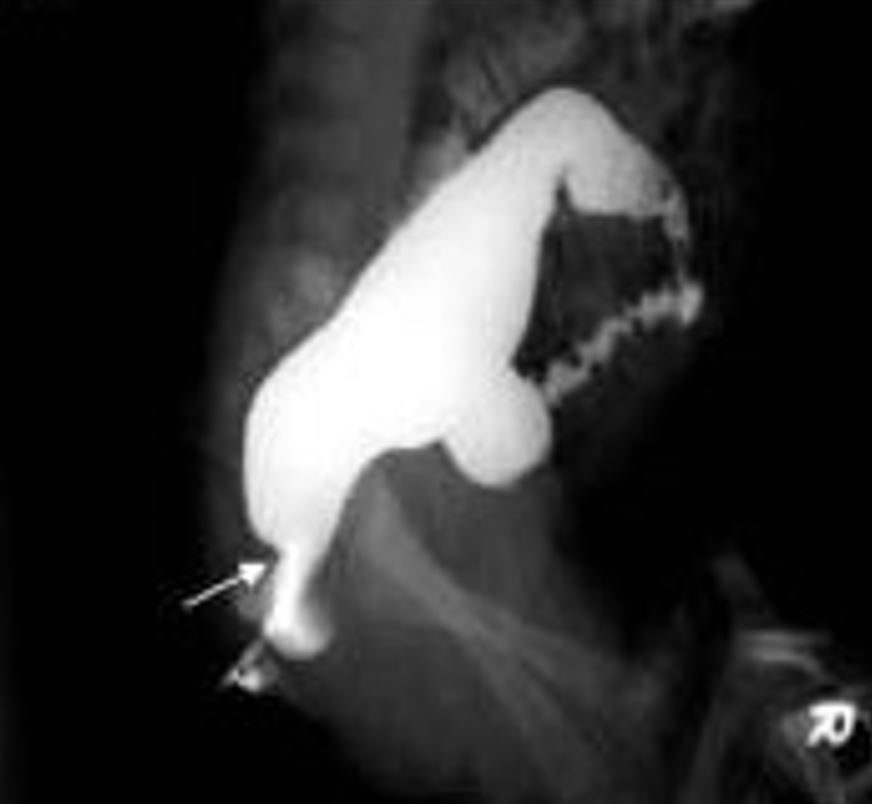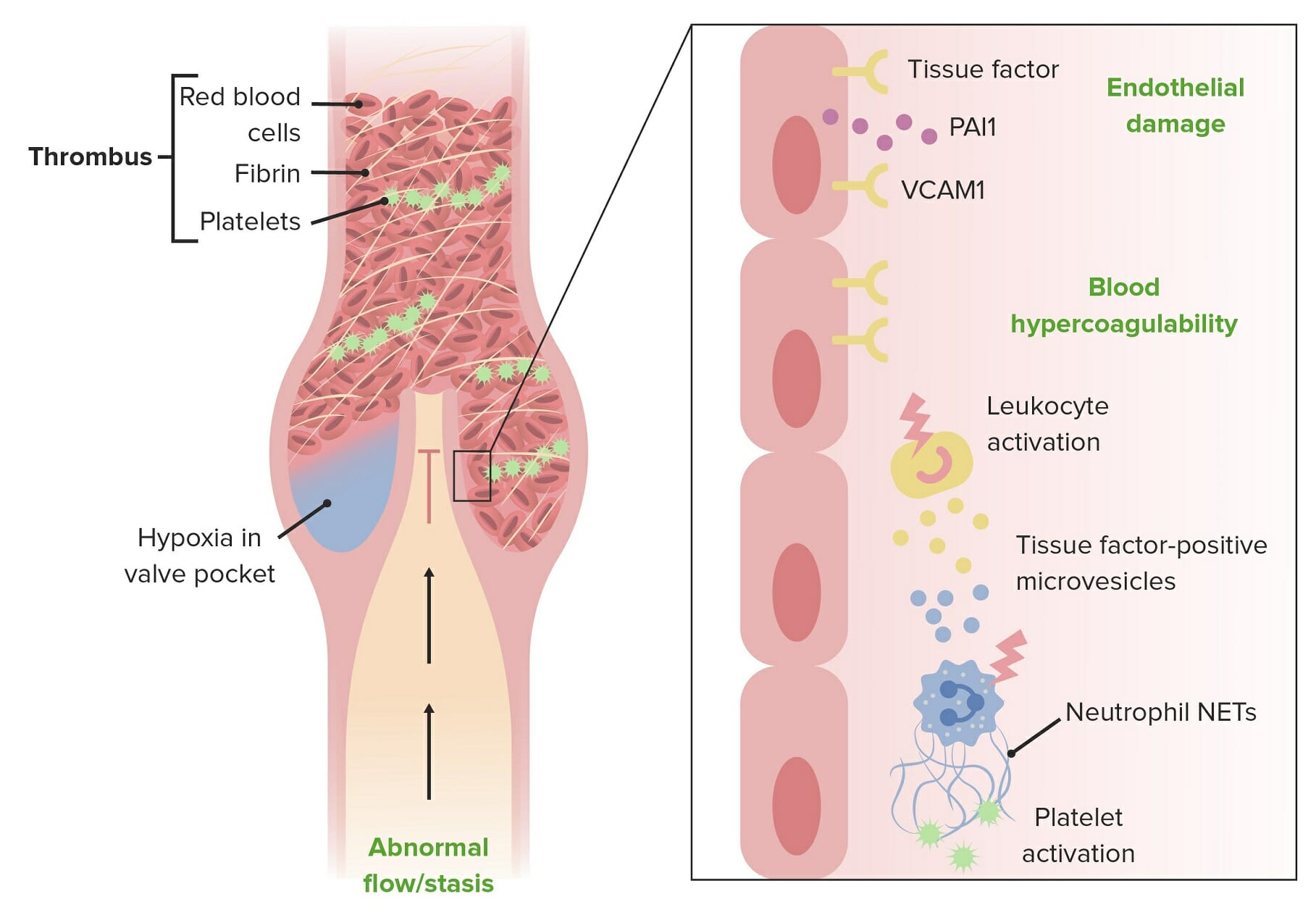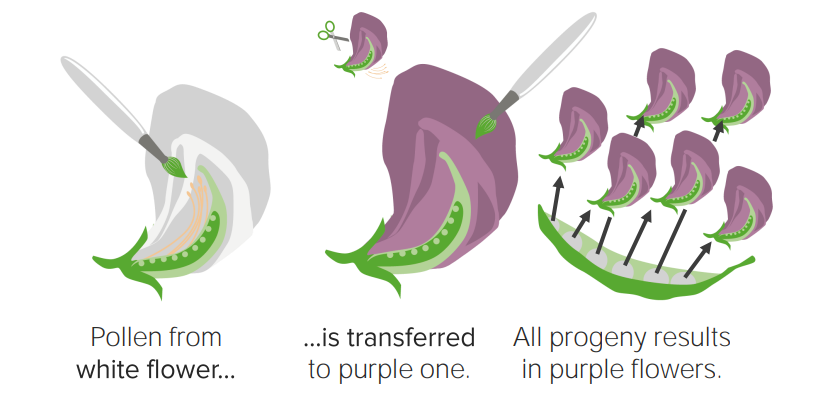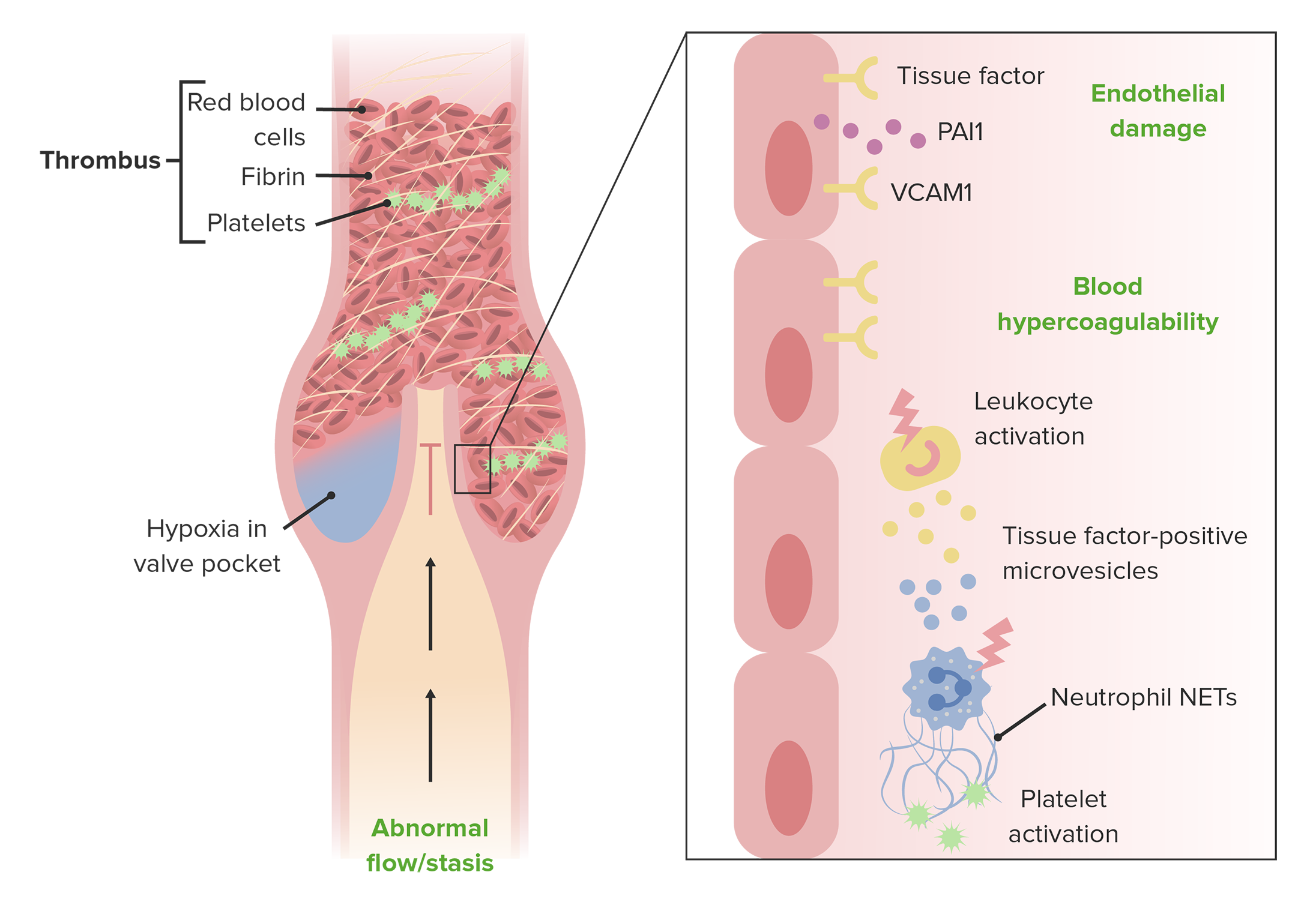Playlist
Show Playlist
Hide Playlist
Thrombosis and Hirschsprung Disease
-
Slides 02 Multifactorial Gene Disorders-Examples Multifactorial Inheritance.pdf
-
Download Lecture Overview
00:01 Now, let’s take a look at a few disorders that we do know at least a part of the genetic component for. 00:11 We know in some conditions that there is a genetic and environmental component. We know in others what some of the genetic component is and perhaps some of the environmental. We will look at venous thrombosis as well as Hirschsprung disease, type 1 diabetes, and Alzheimer’s. 00:35 Again, the list of things that I’m covering is not exclusive but it is highlighting the things that you’ll find on your exams. Hopefully, the majority of things that you’ll find on your exams because obviously there are many, many more conditions than the ones we’re covering. 00:56 But these are the highlight tour of what you should find there and what you should be expected to know. 01:02 This is a question that I have had often throughout my life, ever since I was first put on a birth control pill. 01:12 Why are they so worried about blood clots and smoking and this and that? It turns out that there really is a solid story behind it now that we’ve dug into it even more. So, why do we have to worry about oral contraceptives and blood clots? It’s more than just correlation of higher incidence, it turns out. 01:33 This is an example where we are going to see specific genes, in fact, two specific genetic factors that come into play as well as one, at least one environmental factor, the environmental factor being the oral contraceptives themselves. The example here, not that other thromboses aren't a big issue because even lower leg thrombosis is an issue. But this would be idiopathic cerebral vein thrombosis or idiopathic CVT which means that it’s going to be happening in the cerebrum. This is where we’ll see the thrombosis or the blockage. I’m highlighting it because there’s lots of work done in this area to confirm the environmental and genetic roles. I’m sure when you look at this picture, you go, “Oh no. Not another cascade of events and more physiology to remember.” But the truth is you don’t have to know all of these. I’m just using this graphic as a means to help you see the two genetic components. It’s a pathway you may or may not be familiar with at this point. 02:57 Probably you are fairly familiar with it from physiology but we’re not really adding anything to it. 03:04 Just highlighting two places in it where we have noted that there are genetic impacts. First of all, we have a mutation in factor V. Factor V, that mutation actually makes it much more stable. 03:22 So, it’s much harder to break it down which means it’s present more often. If you look at its way into the pathway, you can see that factor V, actually more factor V is going to escalate the formation of clots through the pathway. The other component or the other genetic mutation that we see is in prothrombin. That actually, that mutation increases the production of prothrombin messenger RNA. So perhaps, it has one of those enhancer regions that increases that. I’m not really sure precisely the mutation but perhaps for some reason anyway, we’re seeing increased production of the messenger RNA which means that there is more prothrombin present. In the situation when you put these two factors together, we see acceleration towards a clot. That part should be clear, right? Hopefully, you know the pathway but the important part here again is these two genetic mutations. 04:26 Now, where does the birth control come in? Taking oral contraceptives alone actually increases the risk of thrombosis or clot formation by about 14 to 20 times. I might add smoking to that, that can be another environmental factor. So, there’s going to be multiple environmental factors here too. 04:50 This is just one that we have solid evidence to identify. Now, if in addition to that, you have the mutations for prothrombin or factor V, we can see a 30 to 300 times or a full impact so that it’s really, really a much more significant risk. It would be important when consulting patients to perhaps make sure they don’t have either of these mutations when deciding to go on to an oral contraceptive. 05:22 Perhaps a different method would be a better choice. I imagine that we will shortly be able to do genetic screening for both of these mutations for fairly inexpensive cost and thus prevent more cerebral vein thrombosis. Anyway, hopefully these all make sense to you and add some clarity to what some of the risks are with oral contraceptives and thrombosis. Another disease that we need to cover that has some complexity. I may have covered it previously in diseases. We didn’t really know the genetics behind but it turns out we’re learning some of the genetics behind it. 06:12 That’s Hirschsprung disease. Hirschsprung disease is a developmental abnormality of the enteric nervous system, so the nervous system around the gut such that in a varying degree, some of the ganglia aren’t there which results in the lack of peristalsis or lack of squeezing things through the intestine. That results in symptoms that are severe constipation and can present as symptoms of intestinal obstruction. I first was familiarized with this when there was a child who was having issues with passing feces very young, below one year of age and was very unhappy and obviously crying all the time because he was immensely uncomfortable and couldn’t communicate why. They thought that there was some sort of intestinal blockage. They did all sorts of visualization and showing the investigation into the whole enteric system. Obviously, that wasn’t the case but they learned that there’s actually no nerves, no innervation to produce peristalsis. So, his large intestine was just sort of growing and growing and growing and growing as it filled with waste which obviously made him very, very uncomfortable. What they will usually do is resect that part of the bowel. 07:44 Anyway that’s what happened with this child. Magically, he is fine. Anyway, we have recently learned that there are a number of different places that mutations are associated with this disorder, probably 12 different loci or so. The last, the main one of interest here just to provide an example is the loss of function mutation in RET gene which is a particular locus that codes for receptor tyrosine kinase. 08:26 Receptor tyrosine kinases are involved in all sorts of signaling and all of that, right? Upstream from this gene, there are also noncoding regions that are regulatory regions that are showing to have mutations so that some of the regulatory proteins can't perhaps bind. Thus, we don’t see correct or efficient transcription of the RET gene and thus, no or not enough of receptor tyrosine kinases, so on and so forth. 09:01 The figure here may look a little bit complicated. I wouldn’t worry about the details. It’s just showing you a number of different genes and loci for those genes that might be involved. The point here is that Hirschsprung disease, you now know what it is. It’s a disease of the gut where the nervous system isn’t working properly. It’s also an example of where mutations that are in noncoding regions can actually have an impact on the phenotypes. Coding regions in this case and noncoding regions can come together. 09:41 Multigene, multi-allele disorders, so again lots and lots of complexity and layers go into the picture here.
About the Lecture
The lecture Thrombosis and Hirschsprung Disease by Georgina Cornwall, PhD is from the course Multifactorial Inheritance. It contains the following chapters:
- Identification of Contributing Factors
- Thrombosis
- Hirschsprung Disease
Included Quiz Questions
Which of the following is the least likely to have a genetic component?
- Iron-deficiency anemia
- Venous thrombosis
- Hirschsprung disease
- Type I Diabetes mellitus
- Alzheimer's disease
Which of the following clotting factors leads to enhanced clot formation when mutated?
- Factor V
- Fibrinogen
- Thrombin
- Fibrin
- Factor X
Which of the following clotting factors is increased by oral contraceptives together with Factor X?
- Prothrombin
- Activated protein C
- Factor V
- Factor Va
- Protein S
Which of the following genes must have a loss-of-function, missense mutation to result in Hirschsprung disease?
- RET
- APC
- PAX6
- NOTCH2
- FGFR3
Which of the following describes Hirschsprung disease?
- A developmental abnormality of the enteric nervous system.
- A developmental abnormality that causes severe mental retardation.
- A neurodegenerative disorder characterized by plaques and tangles.
- A degenerative muscular disorder caused by an abnormal dystrophin protein.
- An X-linked recessive disorder causing colorblindness.
Customer reviews
5,0 of 5 stars
| 5 Stars |
|
5 |
| 4 Stars |
|
0 |
| 3 Stars |
|
0 |
| 2 Stars |
|
0 |
| 1 Star |
|
0 |








